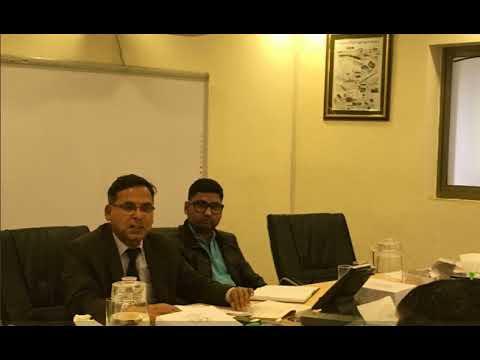
(This is excerpt of opening remarks given by Dr Bipin Adhikari as Chairperson of Nepal Constitution Foundation at the bill review programme on the Bill of Establishment and Management of Bagmati Civilization Development Council, 2066 organised on January 08, 2012)
The Bagmati River originates in Bagdwar and flows through the Kathmandu valley. As any river, the Bagmati river system is also related with the life and breath of the local communities. Apart from this, it is considered a holy river both by Hindus and Buddhists. The famous temple of Pashupatinath lies at the bank of Bagmati. There are other shrines like Gokarneshwar, Guheshwari and Kiranteswar located in its banks. The Hindus and Buddhists, for whom the river water has special religious and spiritual values, consider the water of Bagmati as a holy water. The importance of Bagmati also lies in the fact that Hindus are cremated on the banks of this holy river, and Kirants are buried in the hills by its side. The area has also been enlisted as the World Heritage site. The river comprises of 57 other rivers and rivulets as its tributaries. Yet the Bagmati River is in crisis.
The Bill, though a belated move, has been formulated with the intention to keep the river Bagmati clean, pollution free and for the conservation of the surrounding natural, archeological, cultural and religious heritage through the establishment of Bagmati Civilization Development Council. The structure created by the Bill is similar to many other types of Council established in Nepal in the past. But its challenges are gigantic.
Section 3 of the Bill provides for the establishment of the Council to formulate necessary plan to keep Bagmati and its tributaries clean and unpolluted. Section 4 provides that the Council shall be an independent and autonomous institution. Section 5 provides for the members of the Council which shall be chaired by the Minister for Physical Planning and Development. Section 6 provides that the Council shall meet for at least twice in a year with over fifty percent members required to be present to fulfill the quorum. Section 7 provides for the functions, duties and powers of the Council which stretch from policy making, to directing the execution of the work. Section 8 provides the working area of the Council which extends up to fifty meters from the river’s shores. Section 9 provides that the Council shall prepare the master plan in consultation with the local authorities and must get it approved by the government before implementing it. According to Section 10 the Council must specify a minimum mainstream area of the river. The Council is empowered to generate and manage funds for its work.
Section 13 of the Bill provides for the establishment of an executive committee. Section 15 provides for the functions, duties and powers of the Committee. The Committee is required to present necessary policy to fulfill the objectives of the Act to the Council, build and maintain physical structures (damns, roads) for the conservation of the river, prohibit dumping of pollutants into the river and extraction of sand, conduct river source conservation and tree planting programmes, replacement of squatter settlements around the river, conducting awareness related programmes etc. Section 16 prohibits any encroachment and activity that interrupts the flow of Bagmati or its tributaries. It also requires that permission from the Council be acquired for the construction of any physical structure, usage of any historical site, construction of any kind of settlement, any activity that can have a negative impact upon the environment etc in areas within the purview of the Council as stated in Section 8.
Section 17 empowers the Council to issue one-month notices for removal of any governmental or public physical structure falling within its working area. Section 18 provides that data shall be maintained for all the government and public lands falling within the Council’s purview by the Committee. According to Section 19 the Council can ask the government to acquire lands that are necessary for the implementation of the Council’s plans. The Committee can make use of any government or public land for its purposes (Section 20). Section 21 empowers the Executive Committee to form sub-committee as required to carry out its functions. Section 24 enables the Committee to ask for departmental action against any officer unwilling to cooperate with the Committee.
The Vice-Chairman of the Council can direct monitoring of the works done under this Act, according to Section 25. Section 26 prescribes that Vice-Chairman is required to be graduate from a recognized university with experience in field of environment or management. The Vice-Chairman has several executive, directive and supervisory powers. Section 31 provides that anyone found violating Section 16 by building unauthorized structure shall be fined up to Rs. 3 lakhs and the structure shall be demolished. Anyone polluting the river, or harming any cultural or religious heritage or extracting sand from the river basin shall be fined up to Rs. 1 lakh. Section 32 provides for appeal against punishment ordered by the Committee.
There are several improvements that can be done in the Act. Firstly in the preamble it should be added that the intention of the Act is also to prevent encroachment of the riverside areas and protect the river ecology as well. In the absence of this provision, it would not be possible for the Council to check several types of abuses to the Bagmati River. Secondly the Act can be titled as Bagmati Civilization Conservation and Development Act to underline the conservational aspect as well. Similarly in Section 7 it could be mentioned that the function of the Council is to make the riverside environment ecologically vibrant as well. It has also been suggested that the Council should have more area under its jurisdiction.
While determining the mainstream area of the river, due regard must be given to how wide the river was in the old times. It must be kept in mind that Bagmati’s flow has greatly reduced in the recent decades due to various reasons like urbanization and pollution. Therefore it is important that the historical width of the river must be given due consideration while attempting to improve the quality of the river water. The Executive Committee under Section 13 could be made more inclusive with regard to women and other communities. The Committee’s goals must include the improvement and maintenance of the environment around the river and perhaps also include the promotion of ecotourism in these areas.
In order to move the settlements built on the river banks in a convenient manner, perhaps a 90 day notice could be given by the Committee. With regard to the qualifications of the Vice-Chairman is has been suggested that the position requires at least a Master’s degree due to the nature of the job at hand. Regarding removal of the Vice-Chairman, bad conduct must be proved before it can become a ground for such removal. It has been suggested that the Council should gather a portion of its funds from the house and sewage tax from the local authorities inside the Kathmandu valley for the funding process to be reliable. This will also let the residents feel that they are a part of the conservation efforts. It can also increase the accountability of the Council.
It is seen that Section 31 only prescribes the maximum amount of fines that can be imposed for the contravention of Section 16. It has been suggested that a minimum amount should also be specified so that the wrongdoers are not given undue advantage of this loophole.
Overall, this legislation appears to be a very good initiative at improving the dismal state of the holy river Bagmati with due regard to its tributaries as well.



